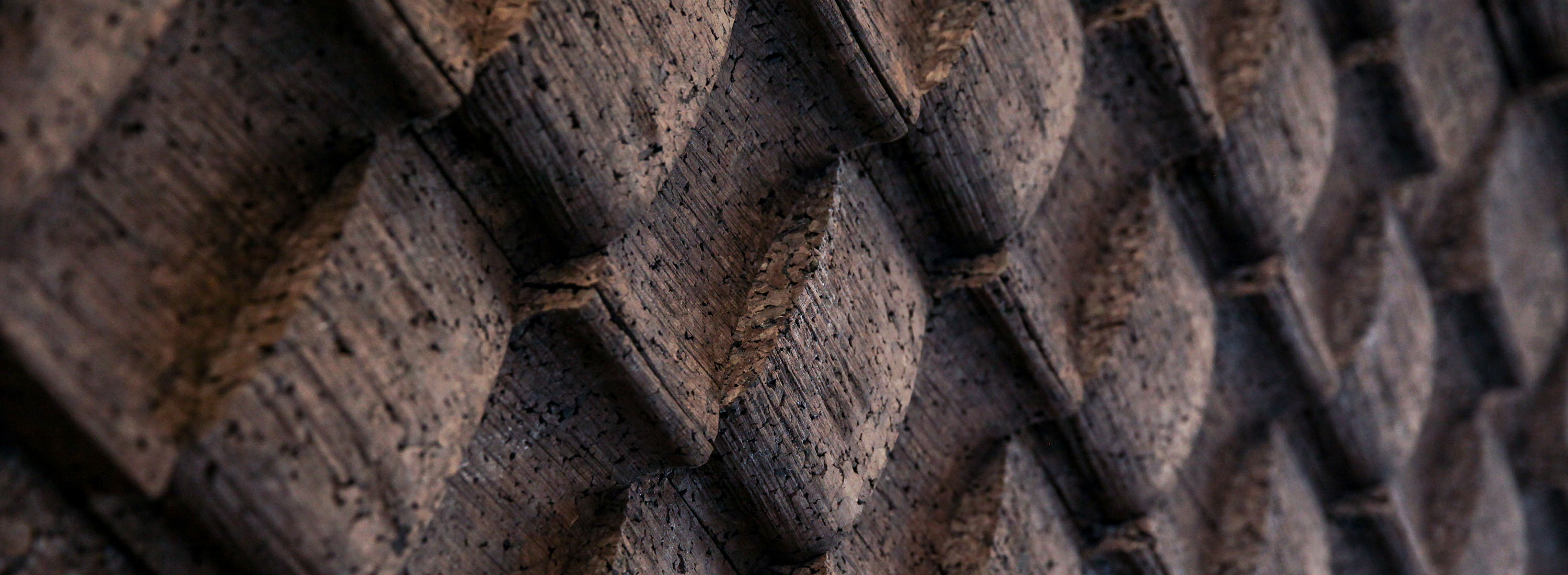Nature's own noise killer, is decorative, sustainable and cheap!
Cork is finding its way back into interior design. A long way down the road because the material is completely in line with developments, where organic materials and nature-inspired colors have received extra attention. But it can turn into much more than that. Cork is both sustainable for the environment and sustainable as a long-term sustainable concept.
Cork is nature's own noise killer with high acoustic value per. invested euro
There are several different machinations of cork. In addition to the cork stopper, the best known is the light cork that is often used for floors. It is hard compressed, relatively thin and completely sealed in the surface. Fine for attenuating step noise, but not quite as effective as acoustic absorbent.
The cork we are dealing with in this article, on the other hand, is spagnum brown, thicker and coarser in structure (picture). This gives it very good properties as an acoustic absorbent. There are two things in particular that make the cork really exciting. First, the cork is nature's own absorbent completely without additives. Second, a very high acoustic value per krone.The high acoustic value per euro, we calculate by looking at the so-called equivalent absorption area (the proportional noise-reducing area). In many devices, large areas are needed to reduce the reverberation time (reverberation) sufficiently, so it matters what the products cost in relation to how effective they are.
The best materials / products are 50-60% better at reducing noise than cork, but in return quickly cost 5-10 times as much per. sqm. So maybe more cork is needed, but the cork will still be a much smaller item in the budget, because you reach the absorption area that is needed, cheaper.
The cork is decorative and adds calm and warmth to the decor
When Grape added cork to the palette of materials we design with, it was primarily because the decorative effect is breathtaking. At the same time, the heat and acoustic properties of the material help to draw extra well-being and well-being into any room.
The decorative effect can be optimized with light and shapes. If the cork is hit by spots in the ceiling, the golden color of the material is brought to life. The cork is also workable, so that with a little creativity even more life and decorative effect can be added.
For Grape, for example, I have designed Impact random wallcover, where small curved bricks (pictured) can be freely put in a decorative pattern. The bricks are optimized in shape so that they cast decorative shadows when hit by light from above. See also the image above.Once the cork has found its way into a decor, the soft warm color and reduced noise will have a de-stressing effect on those who use and stay in the room.
Sustainability is compelling
Cork comes from the cork oak, which primarily grows in Portugal. Cork is bark from the trees and can be "harvested" every 9 years without the trees being damaged. So the trees do not cut down, but are allowed to stand and grow even bigger.Production takes place by peeling the bark from the trees, granulating it and boiling it. The boiling is done by forcing 350-370 degrees hot water vapor into the cork, which expands and releases a substance called “suberin”, which binds the cork together under the pressure.
Cork does not contain additives at all. The treatment gives the cork a pleasant burnt scent, which, however, diminishes for a period after installation.
During production and cutting, cork dust is released. Dust that is recycled as energy. As much as 60% of the factory's power consumption is covered in this way.
If the entire accounts are settled, the production and distribution of cork absorbs more CO2 than it releases. The cork is also 100% recyclable.
So therefore, cork will live a long life as a decorative acoustic material
The three guns above speak for themselves. For Grape, which uses surroundings to influence behavior, we have no doubt: The cork is long-lasting as both a material and a concept, because it adds to the interiors a pleasant naturalness that we have not yet seen from other materials.
